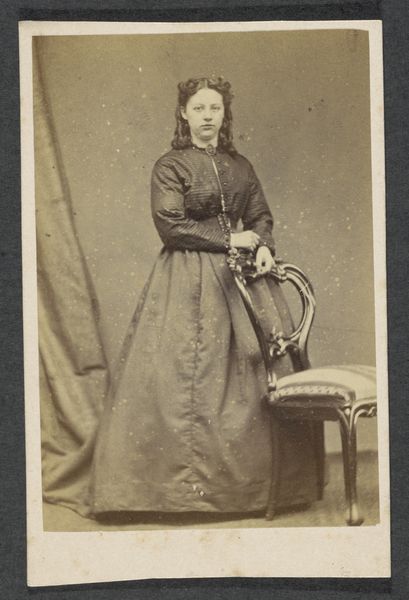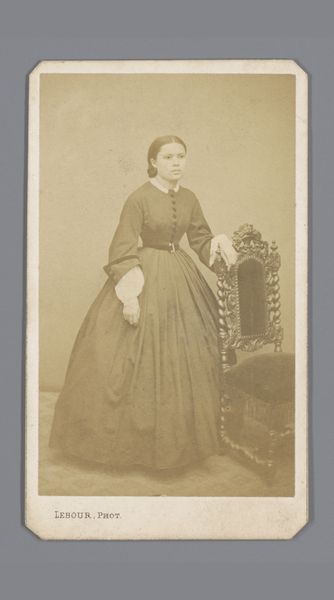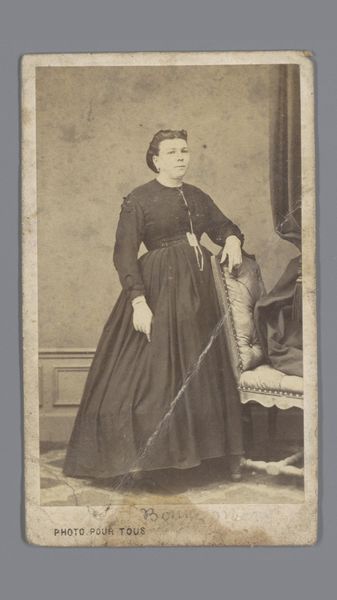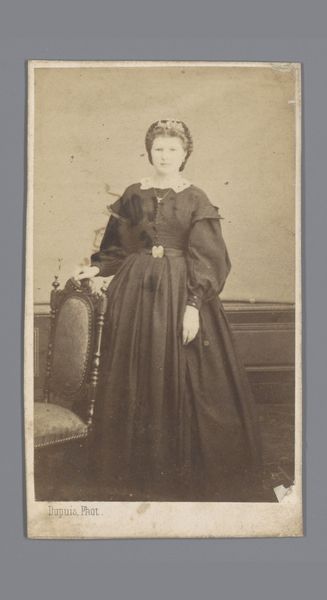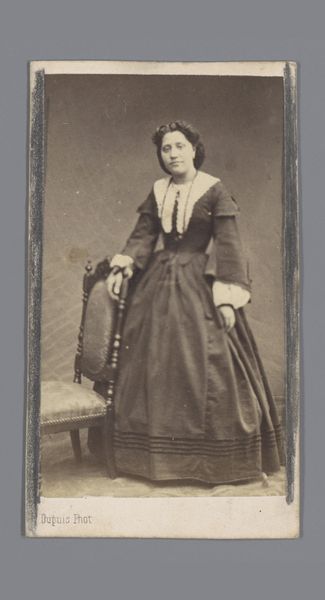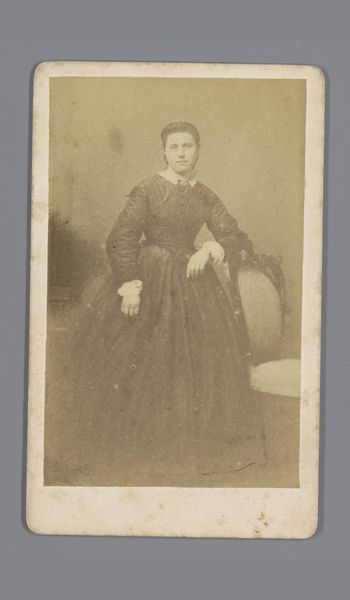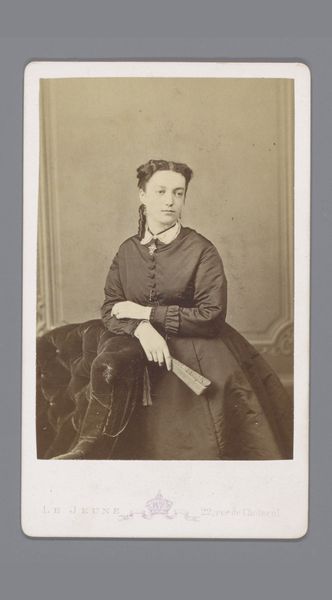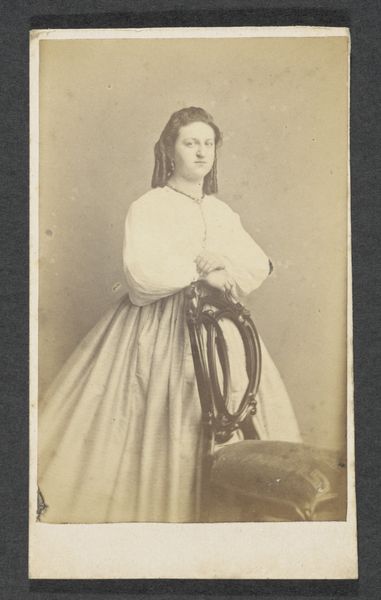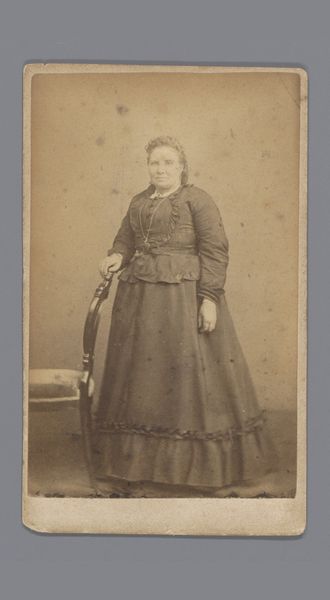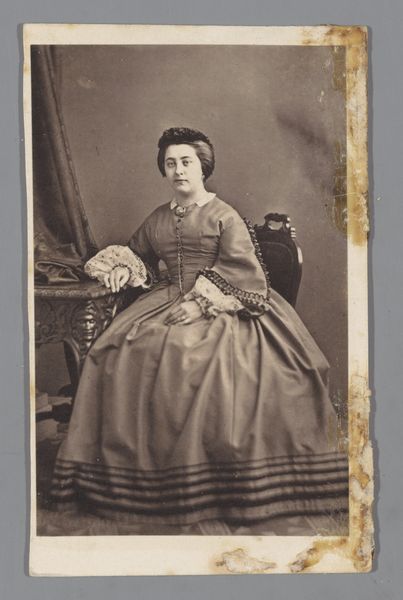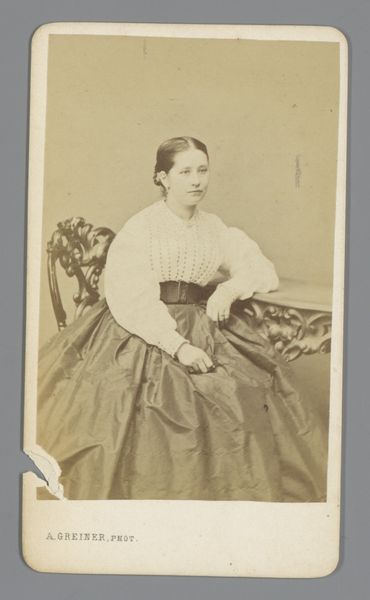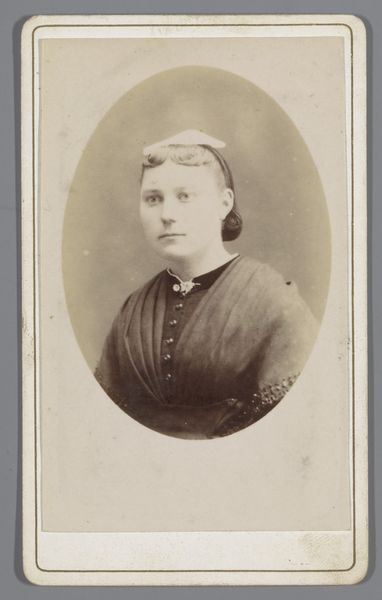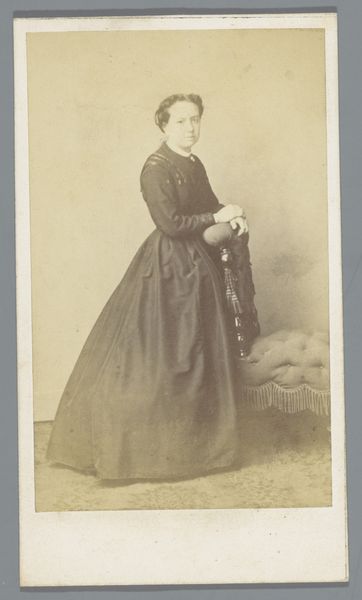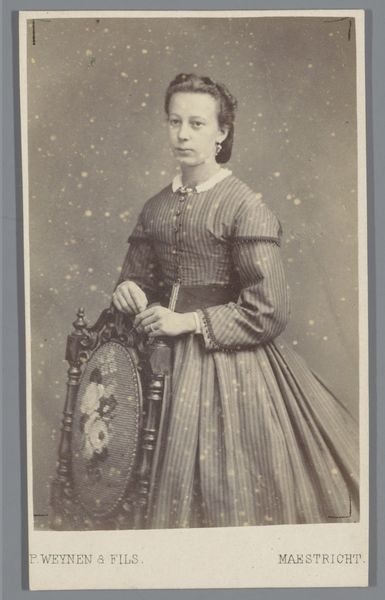
photography, gelatin-silver-print
#
portrait
#
photography
#
gelatin-silver-print
#
genre-painting
Dimensions: height 106 mm, width 62 mm
Copyright: Rijks Museum: Open Domain
Curator: This gelatin-silver print, taken sometime between 1865 and 1871 by Daveluy, is called "Portret van een onbekende jonge vrouw"—Portrait of an Unknown Young Woman. Editor: It's a very serious portrait, isn’t it? There's a stillness, almost melancholy, in her expression. And that dress… such a dark, enveloping fabric. It absorbs all the light. Curator: Precisely. Let’s think about the context of a photograph like this in that era. These portraits were often costly and time-consuming. Sitting still for extended periods! The material quality mattered—the paper, the developing chemicals. The dark fabric you mentioned wasn’t just a matter of aesthetics, but potentially reflective of available dyes and the sitter's social status too, maybe emphasizing solemnity and respectability. Editor: But the darkness… don't you find it evocative? I’m drawn to the almost mournful aspect. Black has always carried significant weight, think of mourning rituals, depictions of the underworld. Her somber attire and posture invite speculation. Was she in mourning? Was this meant to project a certain reserved image? Curator: An interesting interpretation. And the presence of black certainly lends itself to symbolic readings regarding status and propriety. Although what catches my eye is the production of these carte de visite portraits. Photography became relatively accessible for the emerging middle classes, fostering an interesting type of visual commodity and social exchange. Editor: Yet there's something very personal, very intimate captured in her gaze. Photography’s allure, even then, rested on this seeming truth, even though manipulated and curated for various ends. Is it an accurate glimpse into this woman's soul, or simply a reflection of societal expectations encoded in imagery? Curator: And were these photographs displayed, circulated amongst family? How was such an image consumed and preserved as a treasured artifact? These are intriguing production-and-reception considerations that broaden one's thinking about 19th-century class and representational systems. Editor: It certainly invites pondering. Perhaps the appeal lies in this tension between personal symbolism and the documentary aspect, both anchored by this unknown woman’s direct, captivating stare. Curator: Ultimately, understanding its materials, social milieu, and function in mass-producing photographs lets us further discuss the value we find today in a portrait of an unknown person over a hundred years removed. Editor: And for me, exploring her image allows one to think about the complex encoding of personality in symbolic terms, a compelling intersection where the Victorian era and modern curiosity converge.
Comments
No comments
Be the first to comment and join the conversation on the ultimate creative platform.
